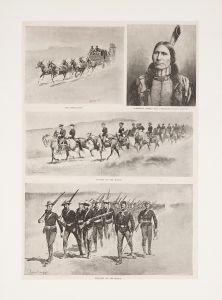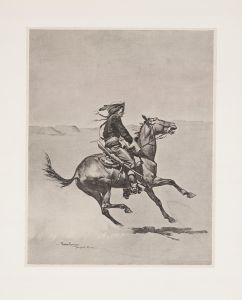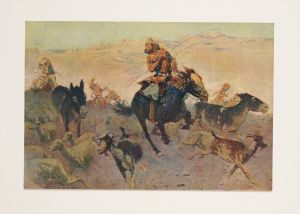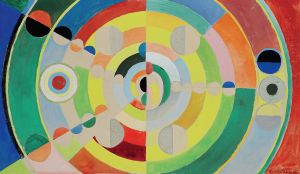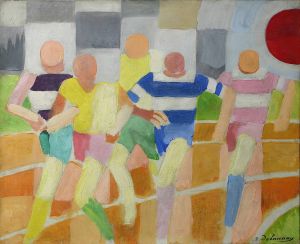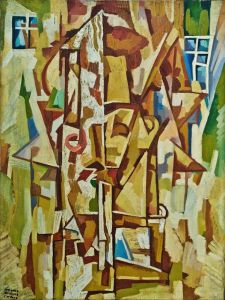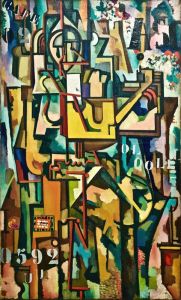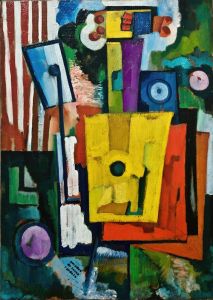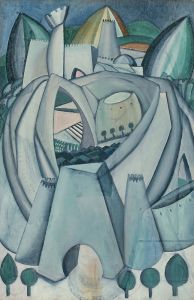
Les Cavaliers
A hand-painted replica of Amadeo de Souza-Cardoso’s masterpiece Les Cavaliers, meticulously crafted by professional artists to capture the true essence of the original. Each piece is created with museum-quality canvas and rare mineral pigments, carefully painted by experienced artists with delicate brushstrokes and rich, layered colors to perfectly recreate the texture of the original artwork. Unlike machine-printed reproductions, this hand-painted version brings the painting to life, infused with the artist’s emotions and skill in every stroke. Whether for personal collection or home decoration, it instantly elevates the artistic atmosphere of any space.
Amadeo de Souza-Cardoso (1887–1918) was a Portuguese modernist painter known for his innovative and eclectic style, which drew from various artistic movements of the early 20th century, including Cubism, Futurism, and Expressionism. One of his notable works, Les Cavaliers (The Horsemen), exemplifies his dynamic approach to composition and color.
Les Cavaliers is a painting that reflects Souza-Cardoso's interest in movement, energy, and abstraction. The work depicts horsemen in motion, rendered in a fragmented and vibrant style that showcases the influence of Cubism and Futurism. The figures and horses are broken into geometric shapes and planes, creating a sense of dynamism and rhythm. The use of bold, contrasting colors further enhances the vitality of the scene, making it a striking example of Souza-Cardoso's ability to synthesize different artistic trends into his unique vision.
The painting was created during a period when Souza-Cardoso was actively engaging with the avant-garde art scene in Paris. He was associated with prominent artists of the time, including Amedeo Modigliani, Sonia and Robert Delaunay, and Constantin Brâncuși. This exposure to diverse artistic influences is evident in Les Cavaliers, which demonstrates a blend of abstraction and figuration characteristic of Souza-Cardoso's work.
Amadeo de Souza-Cardoso's career was tragically cut short when he died of the Spanish flu in 1918 at the age of 30. Despite his relatively brief career, he left behind a significant body of work that has been increasingly recognized for its originality and importance in the context of modern art. Les Cavaliers is one of the many examples of his innovative approach to painting, which continues to be celebrated in exhibitions and retrospectives.
The painting is part of the collection of the Calouste Gulbenkian Museum in Lisbon, Portugal, where it is displayed alongside other works by Souza-Cardoso. The museum has played a crucial role in preserving and promoting the artist's legacy, ensuring that his contributions to modern art are appreciated by contemporary audiences.





